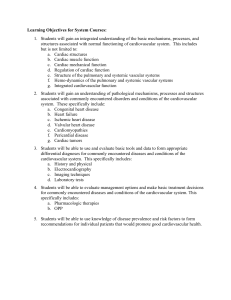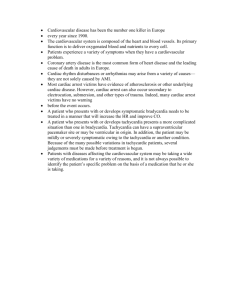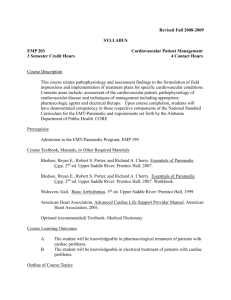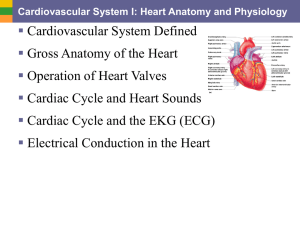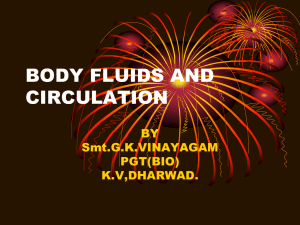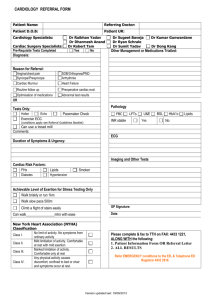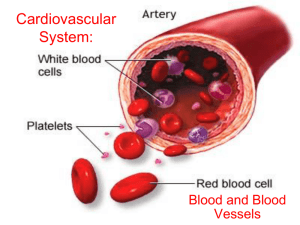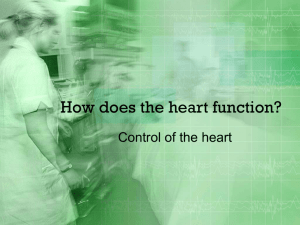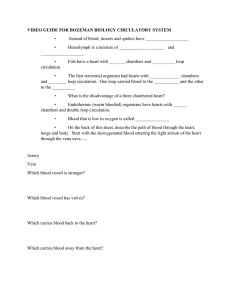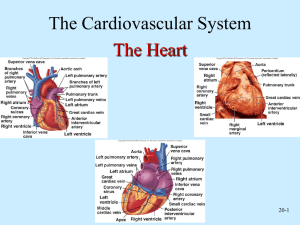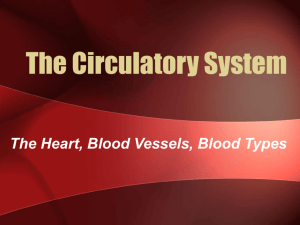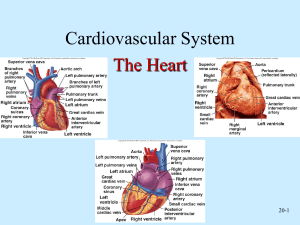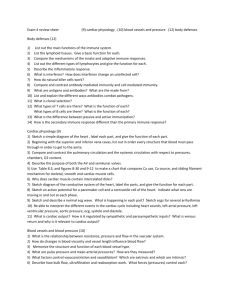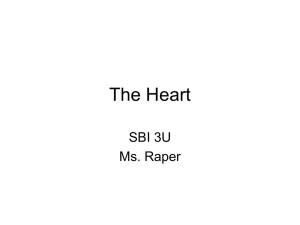Cardiovascular: 1. List the organs that compose the cardiovascular
advertisement
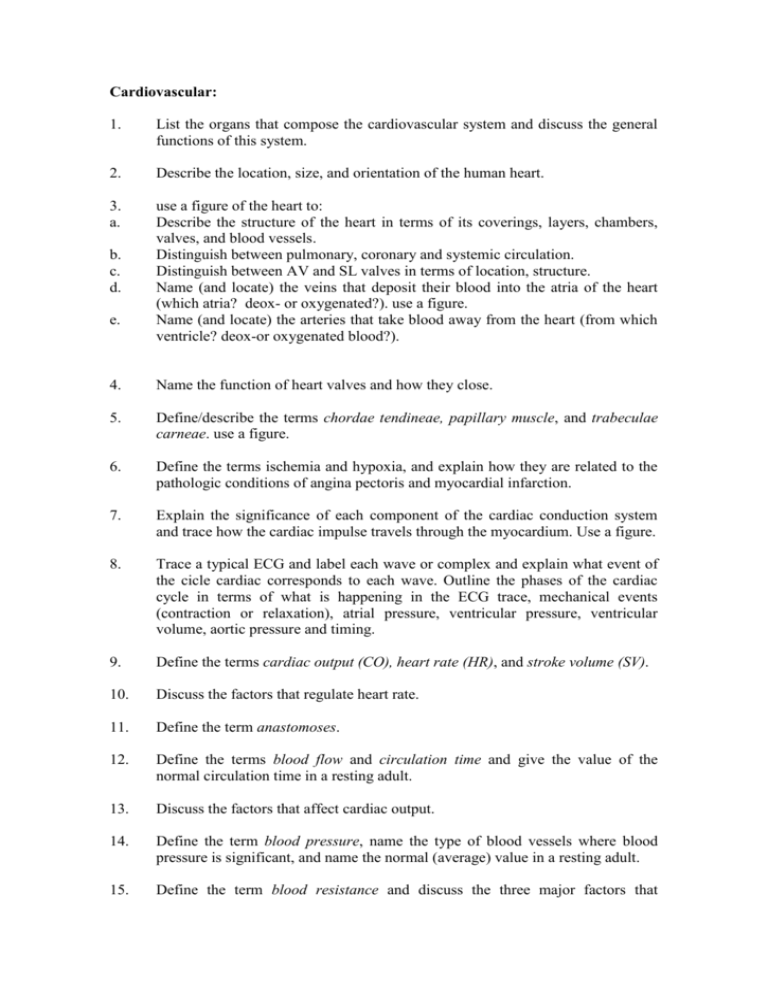
Cardiovascular: 1. List the organs that compose the cardiovascular system and discuss the general functions of this system. 2. Describe the location, size, and orientation of the human heart. 3. a. use a figure of the heart to: Describe the structure of the heart in terms of its coverings, layers, chambers, valves, and blood vessels. Distinguish between pulmonary, coronary and systemic circulation. Distinguish between AV and SL valves in terms of location, structure. Name (and locate) the veins that deposit their blood into the atria of the heart (which atria? deox- or oxygenated?). use a figure. Name (and locate) the arteries that take blood away from the heart (from which ventricle? deox-or oxygenated blood?). b. c. d. e. 4. Name the function of heart valves and how they close. 5. Define/describe the terms chordae tendineae, papillary muscle, and trabeculae carneae. use a figure. 6. Define the terms ischemia and hypoxia, and explain how they are related to the pathologic conditions of angina pectoris and myocardial infarction. 7. Explain the significance of each component of the cardiac conduction system and trace how the cardiac impulse travels through the myocardium. Use a figure. 8. Trace a typical ECG and label each wave or complex and explain what event of the cicle cardiac corresponds to each wave. Outline the phases of the cardiac cycle in terms of what is happening in the ECG trace, mechanical events (contraction or relaxation), atrial pressure, ventricular pressure, ventricular volume, aortic pressure and timing. 9. Define the terms cardiac output (CO), heart rate (HR), and stroke volume (SV). 10. Discuss the factors that regulate heart rate. 11. Define the term anastomoses. 12. Define the terms blood flow and circulation time and give the value of the normal circulation time in a resting adult. 13. Discuss the factors that affect cardiac output. 14. Define the term blood pressure, name the type of blood vessels where blood pressure is significant, and name the normal (average) value in a resting adult. 15. Define the term blood resistance and discuss the three major factors that determine it. 16. Explain the processes by which materials are exchanged through a capillary. 17. Locate the neural cardiovascular center on a mid-sagittal diagram of the brain, explain where impulses sent to it are first detected, and explain where its outgoing impulses are directed and what happens when they get there. 18. List the hormones involved in regulation of blood pressure and blood flow. 19. Distinguish between the pulmonary and systemic circuits (circulatory routes). 20. Name the branches of the ascending aorta, aortic arch, thoracic aorta, and abdominal aorta, and denote what body region they supply with blood. 21. Discuss hypertension. 22. explain renine-angiotensine-aldosterone system



